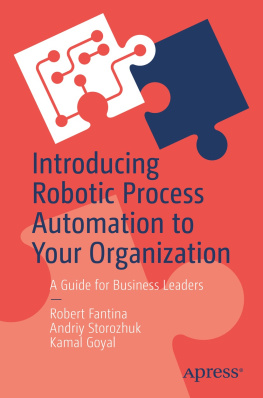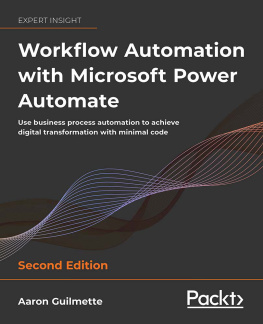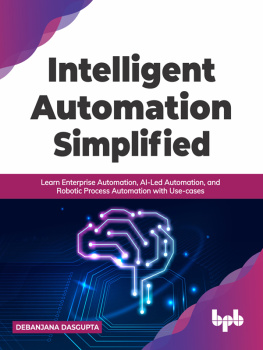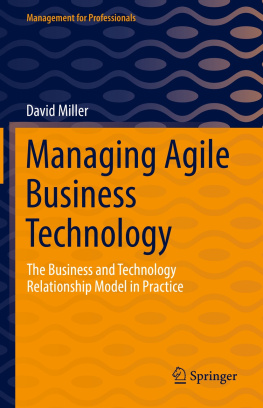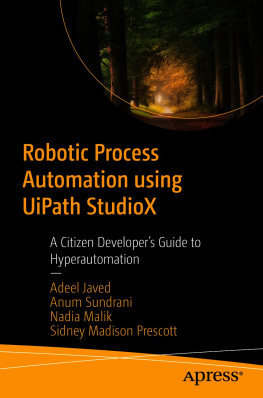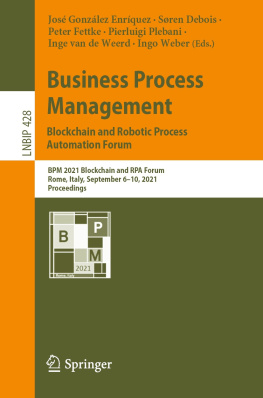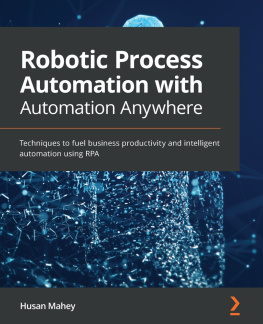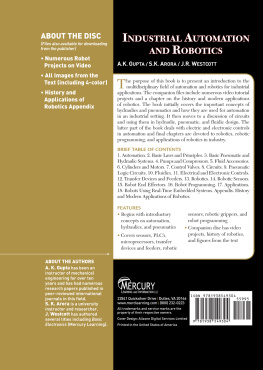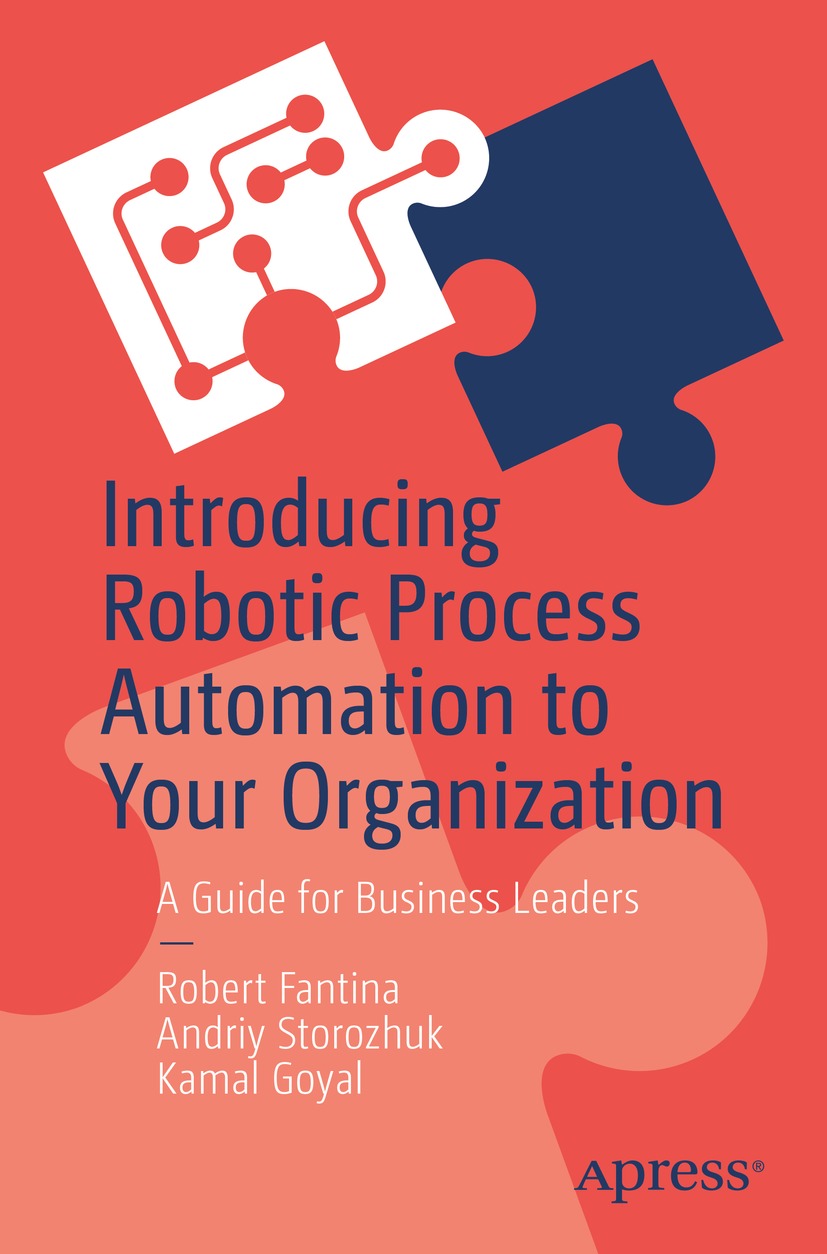Robert Fantina - Introducing Robotic Process Automation to Your Organization: A Guide for Business Leaders
Here you can read online Robert Fantina - Introducing Robotic Process Automation to Your Organization: A Guide for Business Leaders full text of the book (entire story) in english for free. Download pdf and epub, get meaning, cover and reviews about this ebook. year: 2021, publisher: Apress, genre: Business. Description of the work, (preface) as well as reviews are available. Best literature library LitArk.com created for fans of good reading and offers a wide selection of genres:
Romance novel
Science fiction
Adventure
Detective
Science
History
Home and family
Prose
Art
Politics
Computer
Non-fiction
Religion
Business
Children
Humor
Choose a favorite category and find really read worthwhile books. Enjoy immersion in the world of imagination, feel the emotions of the characters or learn something new for yourself, make an fascinating discovery.
- Book:Introducing Robotic Process Automation to Your Organization: A Guide for Business Leaders
- Author:
- Publisher:Apress
- Genre:
- Year:2021
- Rating:4 / 5
- Favourites:Add to favourites
- Your mark:
Introducing Robotic Process Automation to Your Organization: A Guide for Business Leaders: summary, description and annotation
We offer to read an annotation, description, summary or preface (depends on what the author of the book "Introducing Robotic Process Automation to Your Organization: A Guide for Business Leaders" wrote himself). If you haven't found the necessary information about the book — write in the comments, we will try to find it.
Introducing Robotic Process Automation to Your Organization is structured to enable you, a novice to RPA, to successfully implement an RPA program at your company. RPA is rapidly growing in use, but is only starting to be taught at a university level. Many mid-level managers will be tasked with introducing an RPA program at their organizations as senior management learns of its efficacy, but will be unfamiliar with how to do so. This book provides you with the skills and information you need to make an informed decision.
For decades, there has been much discussion about the fast pace of technology, the rapidly changing technology environment, and the need for companies to be on the cutting edge to remain competitive or even relevant. In this ever-changing environment, there is a need to know what can be done in terms of current processes, here and now, that will increase efficiency, benefit customers, and improve profitability. One option is RPA.
This book includes information to assist you in getting the required buy-in and identifying the first few processes for automation. A structure for identifying opportunities on an ongoing basis is detailed, along with concepts that must be considered for solution design and deployment. Throughout the book there are several pause and consider statements to help you think about how principles pertain to your organization. Additionally, there are tips included that offer short, concrete suggestions on how to help implement the particular step being discussed.
What You Will Learn
- Know the benefits of robotic process automation (RPA)
- Understand the limitations of RPA
- Ask the right questions to determine whether a process is a good candidate for automation
- Obtain buy-in from skeptics at the senior and middle manager levels, and from line workers
- Be familiar with the structure required for success
Who This Book is For
Middle managers who have either identified the need for robotic process automation (RPA) in their organization or have been directed by senior management to explore the possibility of introducing RPA to their organization; managers at all levels who hear about RPA, either through conferences, professional associations, or industry publications, and want to know more; students of business and technology who wish to broaden their understanding of important current trends.
Robert Fantina: author's other books
Who wrote Introducing Robotic Process Automation to Your Organization: A Guide for Business Leaders? Find out the surname, the name of the author of the book and a list of all author's works by series.

